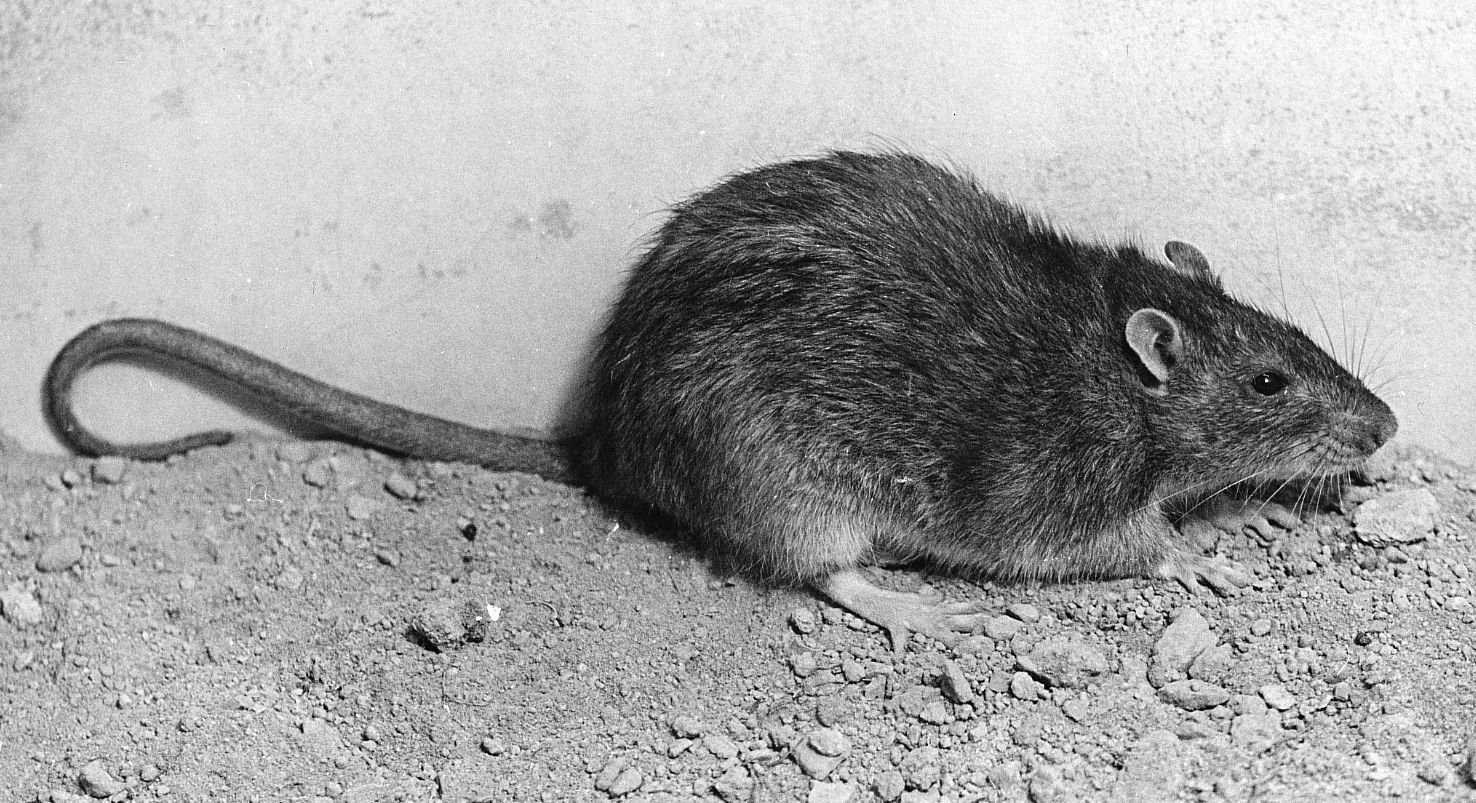NORWAY OR BROWN RAT*
Rattus norvegicus (Berkenhout 1769)
Order Rodentia : Family Muridae
*Introduced species
DESCRIPTION. Similar to the black, or roof, rat but larger and chunkier; tail shorter than length of head and body. Averages for external measurements: total length, 440 mm; tail, 205 mm; hind foot, 46 mm. Weight, 400–500 g.

DISTRIBUTION. Widespread in Texas but not so common in the southern half of the state as the black rat.
HABITS. The Norway rat (also known as the wharf or brown rat) lives both as a commensal in close association with humans and in the feral state, primarily where vegetation is tall and rank and affords adequate protection. For example, the marshy lands on Galveston Island off the coast of Texas offer ideal habitat for them. As a commensal this rat lives principally in basements, on the ground floor, or in burrows under sidewalks or outbuildings. They appear to be most common about feed stores, chicken houses, and garbage dumps. Although more at home on the ground, these rats are adept at climbing and have been observed traveling along telephone wires from one building to another. In places they become exceedingly numerous and destructive.
They feed on a variety of items including both plant and animal materials. All sorts of garbage is eaten, but their preferred food is plant material and grains. When established around poultry houses, they feed extensively on eggs and young chickens. They even have been known to kill lambs and young pigs.
These rats are prolific breeders. The gestation period varies from 21 to 23 days and the number of young from 2 to 14, averaging 7 or 8. At birth, they are blind, naked, and helpless. They grow rapidly; their eyes open in 14–17 days, and they are weaned when 3 or 4 weeks old. There is no delimited breeding season, but there is a tendency for a slowdown in reproduction during fall and winter. The life span is reported to be 2–3 years.
Although these rats are preyed on by a number of animals, including the spotted skunk and the barn owl as well as house cats, such predators often are not able to keep the rat population in check. Considerable destruction of property and foodstuffs can take place where rats are abundant. In addition, they constitute a menace to public health. They are known to be reservoirs of bubonic plague (transmitted to humans by the bite of a flea or other insect), endemic typhus fever, rat-bite fever, and a few other diseases. Every effort should be made to exterminate them when they are found on your premises, and it is advisable to rat-proof garbage cans and all buildings.
PRESERVATION STATUS. Introduced, common. The Norway rat is a very common species across the state. This introduced rat lives in close association with humans and their structures. It is a pest and can have negative effects on native species of rodents.
CONSERVATION STATUS. The IUCN lists the Norway rat as a species of least concern, and it does not appear on any federal or state list of concerned species. No conservation is needed.
From The Mammals of Texas, Seventh Edition by David J. Schmidly and Robert D. Bradley, copyright © 1994, 2004, 2016. Courtesy of the University of Texas Press.
Natural Science Research Laboratory
-
Address
Museum of Texas Tech University, 3301 4th street, Lubbock, TX 79409 -
Phone
806.742.2486 -
Email
nsrl.museum@ttu.edu

